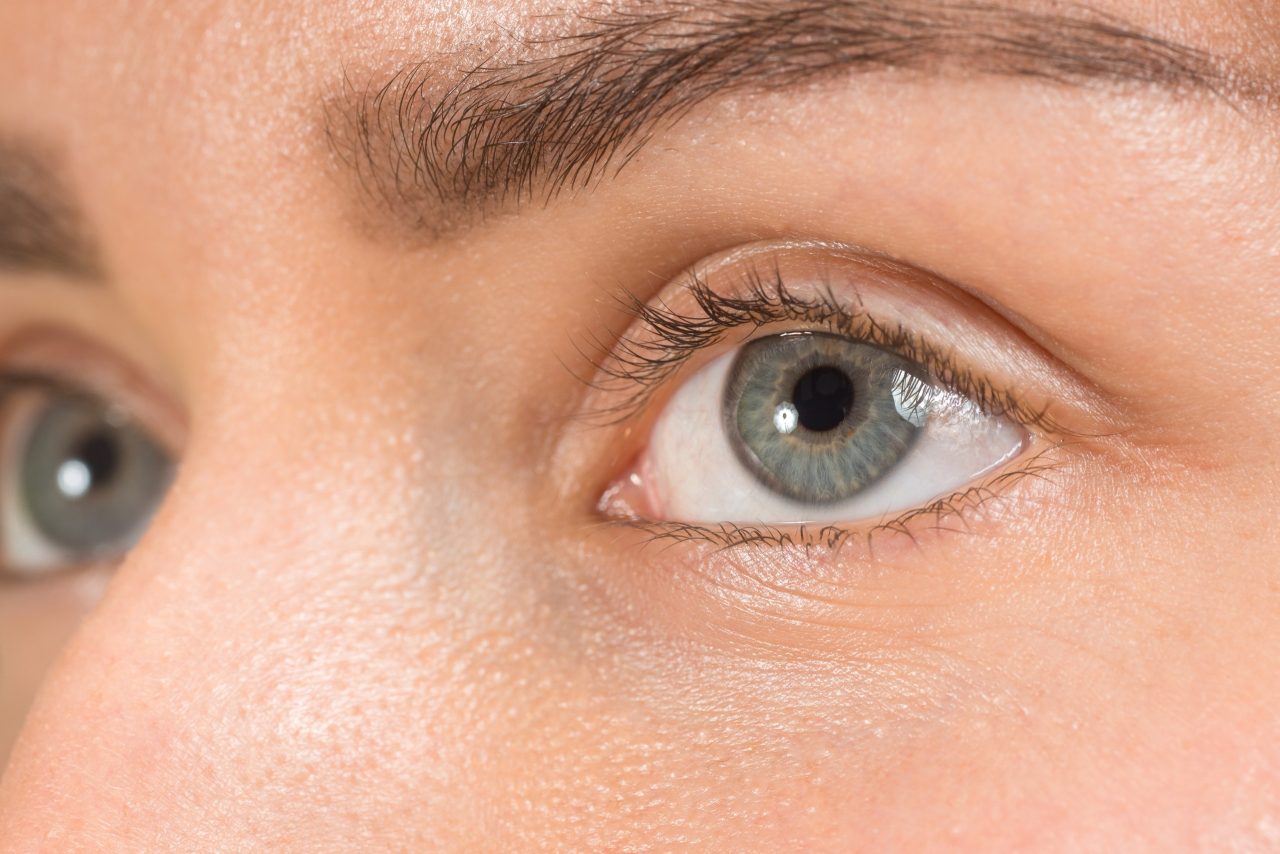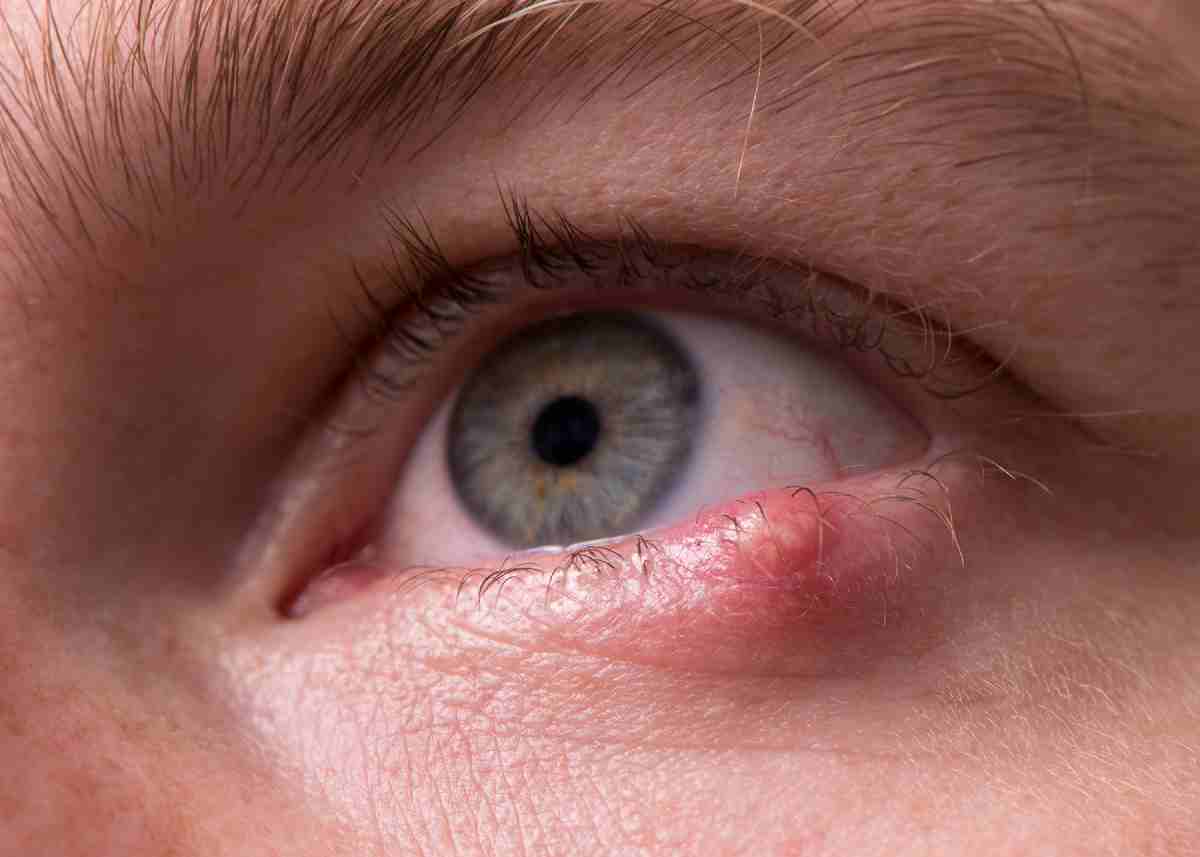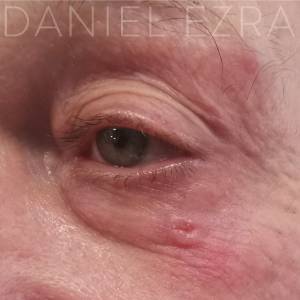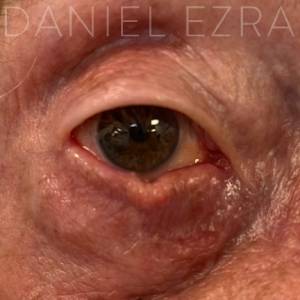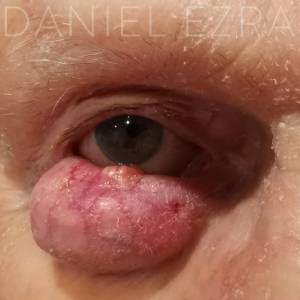What Are the Eyelid Tumour Symptoms?
Most eyelid tumours in their early stages are asymptomatic, meaning you may not have any symptoms. Eyelid tumour symptoms can vary but are commonly characterised by skin changes such as raised eyelid bumps, which may or may not be pigmented. In more advanced stages, tumours can ulcerate, display scaling and crusting, or even split the skin and cause bleeding.
If the cancer has started to spread, patients may experience swelling of the lymph nodes around the ear and under the chin. Patients may present with orbital pain, reduced vision, double vision, or eye displacement in later stages.
Basal cell carcinomas usually present as a painless hard lump, most commonly in the lower eyelid, that grows to break down deeper tissue. Loss of eyelashes is an indicator of a malignant tumour.
Squamous cell carcinomas may appear as a non-healing ulcer on the eyelid with hard, raised edges featuring redness, crusting, or bleeding. Patients may experience decreased vision if the cancer spreads behind the eye.
Sebaceous gland carcinomas commonly present as a small, firm red or yellow lump on the eyelid. This may gradually increase in size and irritate the eye.
